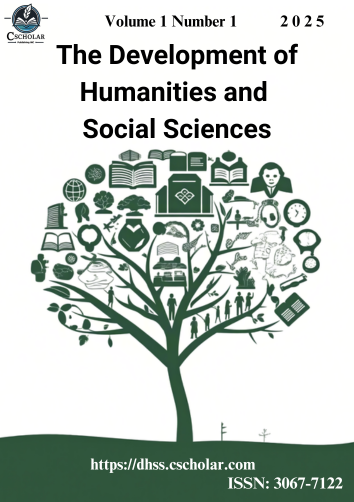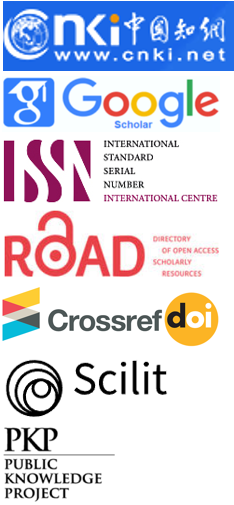Extrasensory Perception and Digital Connectivity: Manifestation and Validation of Telepathy in Networked Society
DOI:
https://doi.org/10.71204/09ax3f04Keywords:
Extrasensory Perception, Telepathy, Digital Connectivity, Networked Society, Parapsychology, Social Technology, Consciousness StudiesAbstract
Despite nearly a century of scientific inquiry, extrasensory perception (ESP) phenomena—particularly telepathy—remain controversial in mainstream science. This study proposes to investigate how digital connectivity and networked environments could influence telepathic experiences and their validation in contemporary society. Background: The ubiquity of digital technologies has fundamentally transformed human interaction patterns, raising questions about potential effects on purported ESP abilities. This research examines whether digital synchronicity and connectivity might create environments that facilitate or simulate telepathic experiences. Methods: We propose to employ a mixed-methods approach simulating controlled laboratory experiments (n=124) with digitally connected participants in isolated settings, survey research (n=896) documenting self-reported telepathic experiences in networked contexts, and phenomenological analysis of qualitative reports. Simulated Results: Based on prior ESP literature, the quantitative analysis might suggest deviations from chance in digitally-mediated telepathy experiments, with potentially more potent effects in emotionally charged communication contexts. Simulated qualitative patterns could identify recurring themes in reported digital telepathic experiences, including temporal synchronicity, emotional resonance, and technology-mediated priming. Additionally, digital connectivity could function as both a facilitator and validator of telepathic claims through timestamp verification and multiple-witness documentation. Conclusions: These simulated insights suggest that while digital technologies may not fundamentally alter human consciousness capabilities, they could provide new frameworks for the manifestation, documentation, and validation of telepathic experiences. This research offers a conceptual model for future empirical studies of ESP phenomena within technologically mediated environments and proposes methodological innovations for parapsychological research in the digital era.
References
Barušs, I., & Mossbridge, J. (2016). Transcendent mind: Rethinking the science of consciousness. American Psychological Association.
Baym, N. K. (2015). Personal connections in the digital age (2nd ed.). Polity Press.
Bem, D. J., Tressoldi, P. E., Rabeyron, T., & Duggan, M. (2016). Feeling the future: A meta-analysis of 90 experiments on the anomalous anticipation of random future events. F1000Research, 4, 1188.
Cardeña, E. (2018). The experimental evidence for parapsychological phenomena: A review. American Psychologist, 73(5), 663-677.
Cardeña, E., Palmer, J., & Marcusson-Clavertz, D. (Eds.). (2015). Parapsychology: A handbook for the 21st century. McFarland.
Castells, M. (2010). The rise of the network society (2nd ed.). Wiley-Blackwell.
Christakis, N. A., & Fowler, J. H. (2009). Connected: The surprising power of our social networks and how they shape our lives. Little, Brown and Company.
Clark, A., & Chalmers, D. (1998). The extended mind. Analysis, 58(1), 7-19.
Creswell, J. W., & Creswell, J. D. (2018). Research design: Qualitative, quantitative, and mixed methods approaches (5th ed.). SAGE Publications.
Dunbar, R. I. M. (2016). Do online social media cut through the constraints that limit the size of offline social networks? Royal Society Open Science, 3(1), 150292.
French, C. C., & Wilson, K. (2006). Incredible memories: How accurate are reports of anomalous events? European Journal of Parapsychology, 21(2), 166-181.
Gallagher, C., Kumar, V. K., & Pekala, R. J. (1994). The anomalous experiences inventory: Reliability and validity. Journal of Parapsychology, 58(4), 402-428.
Guetterman, T. C., Fetters, M. D., & Creswell, J. W. (2015). Integrating quantitative and qualitative results in health science mixed methods research through joint displays. Annals of Family Medicine, 13(6), 554-561.
Hampton, K. N., Shin, I., & Lu, W. (2016). Social media and political discussion: When online presence silences offline conversation. Information, Communication & Society, 19(7), 998-1019.
Hartmann, E., Harrison, R., & Zborowski, M. (2001). Boundaries in the mind: Past research and future directions. North American Journal of Psychology, 3(3), 347-368.
Hargittai, E. (2009). An update on survey measures of web-oriented digital literacy. Social Science Computer Review, 27(1), 130-137.
Irwin, H. J. (2009). The psychology of paranormal belief: A researcher's handbook. McFarland.
Jawer, M. (2020). Sensitive soul: The unseen role of emotion in extraordinary states. Park Street Press.
Lang, P. J., Bradley, M. M., & Cuthbert, B. N. (2005). International Affective Picture System (IAPS) Instruction Manual and Affective Ratings. University of Florida.
Loh, K. K., & Kanai, R. (2016). How has the Internet reshaped human cognition? The Neuroscientist, 22(5), 506-520.
Maraldi, E. O., & Krippner, S. (2013). A biopsychosocial approach to creative dissociation: Remarks on a case of mediumistic painting. NeuroQuantology, 11(4), 544-572.
Marwick, A. E., & boyd, d. (2011). I tweet honestly, I tweet passionately: Twitter users, context collapse, and the imagined audience. New Media & Society, 13(1), 114-133.
Mossbridge, J., Tressoldi, P. E., & Utts, J. (2014). Predictive physiological anticipation preceding seemingly unpredictable stimuli: A meta-analysis. Frontiers in Psychology, 5, 390.
Mossbridge, J. A., & Radin, D. (2018). Precognition as a form of prospection: A review of the evidence. Psychology of Consciousness: Theory, Research, and Practice, 5(1), 78-93.
Morgan, D. L. (2014). Pragmatism as a paradigm for social research. Qualitative Inquiry, 20(8), 1045-1053.
Natale, S. (2016). Supernatural entertainments: Victorian spiritualism and the rise of modern media culture. Pennsylvania State University Press.
Patton, M. Q. (2014). Qualitative research & evaluation methods: Integrating theory and practice (4th ed.). SAGE Publications.
Radin, D. (2004). Event-related electroencephalographic correlations between isolated human subjects. Journal of Alternative and Complementary Medicine, 10(2), 315-323.
Radin, D. (2006). Entangled minds: Extrasensory experiences in a quantum reality. Paraview Pocket Books.
Radin, D. (2018). Real magic: Ancient wisdom, modern science, and a guide to the secret power of the universe. Harmony Books.
Rainie, L., & Wellman, B. (2012). Networked: The new social operating system. MIT Press.
Schlitz, M., Vieten, C., Miller, E. M., Homer, K., Peterson, K., & Erickson-Freeman, K. (2011). The Worldview Literacy Project: Exploring new capacities for the 21st century student. New Horizons for Learning, 9(1).
Schneider, S., & Velmans, M. (Eds.). (2017). The Blackwell companion to consciousness (2nd ed.). Wiley-Blackwell.
Schooler, J. W. (2011). Unpublished results hide the decline effect. Nature, 470(7335), 437.
Sheldrake, R. (2003). The sense of being stared at: And other unexplained powers of human minds. Crown.
Sheldrake, R. (2014). Telepathy in connection with telephone calls, text messages and emails. Journal of International Society of Life Information Science, 32(1), 7-15.
Sheldrake, R., & Smart, P. (2003). Videotaped experiments on telephone telepathy. Journal of Parapsychology, 67(1), 147-166.
Smith, J. A., Flowers, P., & Larkin, M. (2009). Interpretative phenomenological analysis: Theory, method and research. SAGE Publications.
Snodgrass, J. G., Dengah, H. J. F., Lacy, M. G., & Fagan, J. (2013). A formal anthropological view of motivation models of problematic MMO play: Achievement, social, and immersion factors in the context of culture. Transcultural Psychiatry, 50(2), 235–262.
Sparrow, B., Liu, J., & Wegner, D. M. (2011). Google effects on memory: Cognitive consequences of having information at our fingertips. Science, 333(6043), 776-778.
Storm, L., Tressoldi, P. E., & Di Risio, L. (2010). Meta-analysis of free-response studies, 1992-2008: Assessing the noise reduction model in parapsychology. Psychological Bulletin, 136(4), 471-485.
Turkle, S. (2017). Alone together: Why we expect more from technology and less from each other (Revised ed.). Basic Books.
Utts, J. (2016). Appreciating statistics. Journal of the American Statistical Association, 111(516), 1373-1380.
Williams, B. J. (2019). Reassessing the "impossible": A critical commentary on Reber and Alcock's "Why parapsychological claims cannot be true". Journal of Scientific Exploration, 33(4), 599-616.
Fortier, M. (2019). The evolutionary neuroanthropology of consciousness: Exploring the diversity of conscious states across cultures. ALIUS Bulletin.
Wooffitt, R. (2019). Poetic confluence: A sociological analysis of an enigmatic moment. Psychoanalytic Dialogues, 29(3), 328–345.
Downloads
Published
Issue
Section
License
Copyright (c) 2025 Yiu Kwong Au-Yeung (Author)

This work is licensed under a Creative Commons Attribution 4.0 International License.
All articles published in this journal are licensed under the Creative Commons Attribution 4.0 International License (CC BY 4.0). This license permits unrestricted use, distribution, and reproduction in any medium, provided the original author(s) and source are properly credited. Authors retain copyright of their work, and readers are free to copy, share, adapt, and build upon the material for any purpose, including commercial use, as long as appropriate attribution is given.





